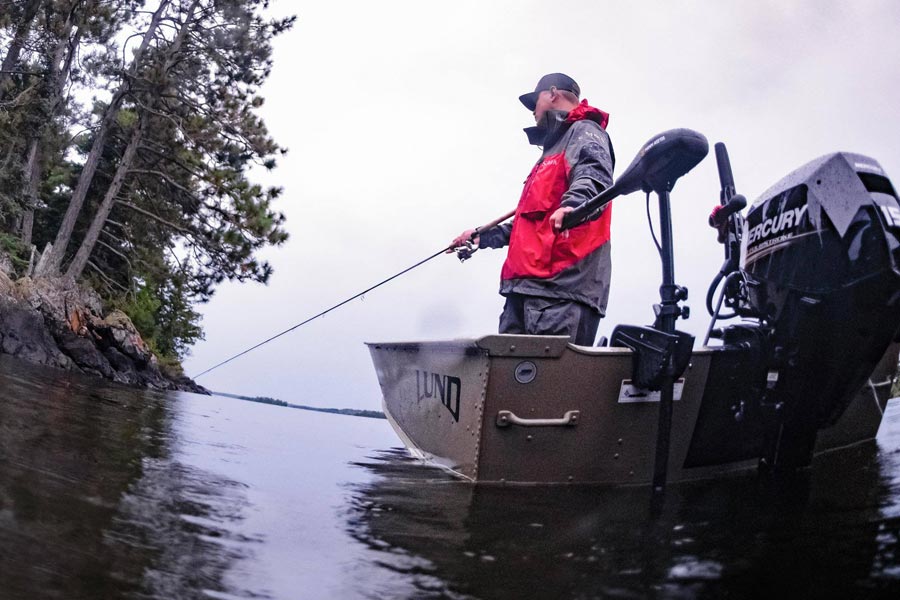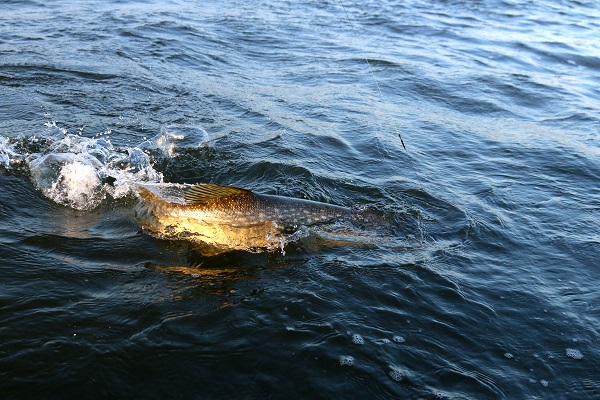Trolling motors, also known as electric outboard motors, are an essential piece of boating equipment. They give you the ability to refine your boat angle on a drift and also allow you to come into fishing areas with a stealthy approach, reducing unwanted noise and disturbance on the water. In this article, we will be covering off everything you need to know about electric trolling motors.
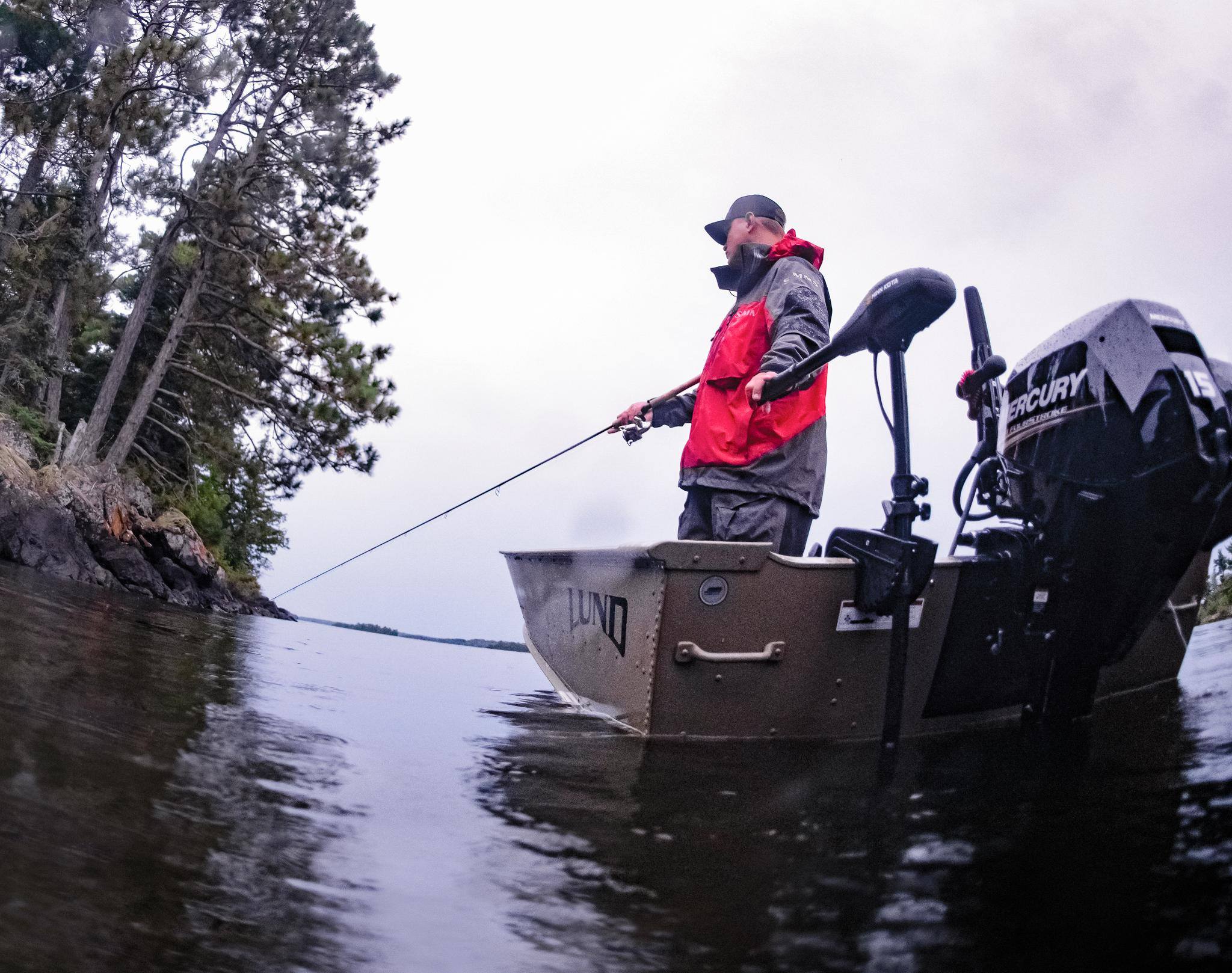
When you are looking to purchase an electric outboard motor, remember there are a few variables to take into consideration that will inevitably influence your purchase. How often will you use the motor as your primary motor? How big is the boat that you will be mounting the outboard on? Will you be using it in weedy conditions? Will you be looking for a motor that will allow you to fish efficiently along contours or anchor points pre-mapped on a GPS functioning fish finder? Will it be used in saltwater?
Who invented the electric outboard?
The first electric motor was invented by OG Schmidt in 1934 in Minnesota and North Dakota, the location led to the birth of the name of the first trolling motor manufacturer – Minn Kota.
Electric trolling motors have their motor submerged beneath the water driving the shaft and propeller directly. This is different from petrol outboards where the motor is above the surface and uses a gearbox to power the shaft and propeller.
Trolling motors are gear driven motors that are powered by a 12-volt or 24-volt electric current provided from marine batteries. Unlike petrol engine outboards, electric motors are rated in their max propulsion force in pounds (lb) and not horsepower. Having the motor beneath the water provides better balance and also allows the motor to be cooled by the surrounding water.
What power of electric outboard do I need?
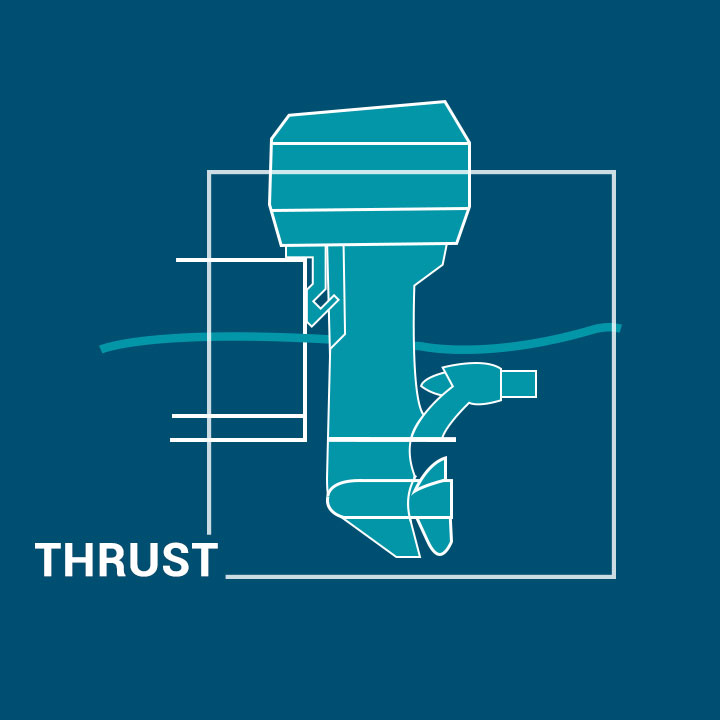
The power of the motor is probably the most important aspect to consider when purchasing an electric outboard for your boat. It will play a pivotal role in determining which motor you should buy. A general rule is that 5lbs of thrust for every 200lbs of weight (including boat, people and equipment). For instance, a fishing dingy weighing 320lbs + 2 people weighing a combined 350lbs + 50lbs of equipment, would require 18lbs thrust rating or higher.
(Total Weight lbs / 200lbs ) x 5lbs = required thrust
Of course, if you plan on using it against stronger currents or winds then it is best to select one with a higher specified rating. It’s always better to have more power than not to have enough!
How big of a battery do I need for a trolling motor?
In most cases we will recommend nothing smaller than a 12 volt 105Ah deep cycle marine battery. This will ensure you get full days fishing from your electric motor. If however, you’re only using a 34-44lb thrust motor on a small loch/fishery. You can reduce the Ah of the battery that you are using, depending on how often you will be utilising the motor in a fishing session, an 85Ah battery would suffice.

How long will a trolling motor run on a battery?
The larger the amp rating, the more power the battery can hold, and the longer it will be able to power an electric outboard motor. For example, a 100 amp hour battery is one that would be able to supply 25 amps of power for 4 hours (25 amps * 4 hours = 100 amp hours) before running out of energy. This is based on a motor running at full power consistently for that period of time and does not take into consideration breaks between use.
Bear in mind, there is a multitude of variables to consider. We have to think of the motor speed we will be using throughout the day, the weather conditions, the size of the boat and how often we are using the motor throughout the day. For example, running a trolling motor at half speed on a flat calm day will see better battery longevity compared to running the battery on full power in rough conditions.
Advice Regarding Batteries:
1. Never connect the (+) and the (-) terminals of the same battery together. Take care that no metal object can fall onto the battery and short the terminals. This would immediately lead to a short and extreme fire danger.
2. Batteries should be stored and maintained at full charge. Failure to recharge lead-acid batteries (within 12-24 hours) is the leading cause of premature battery failure.
What length trolling motor do I need?
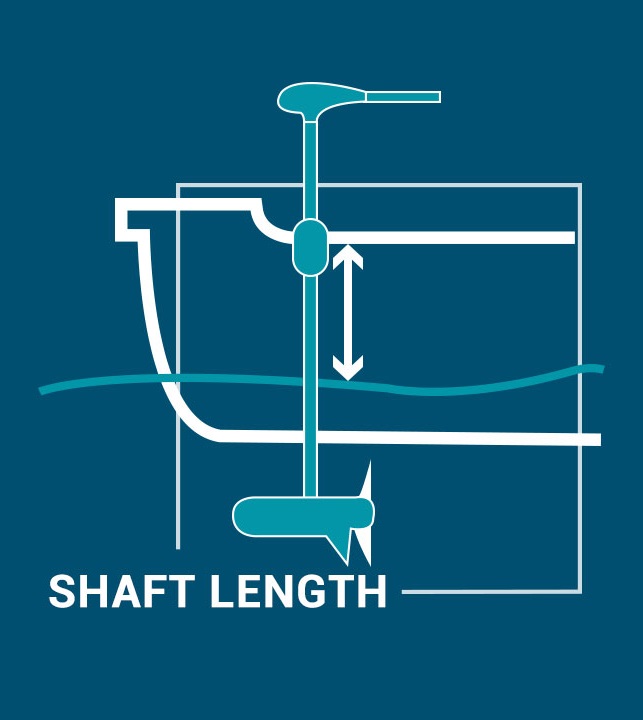
There is no point in having all those pounds of thrust if the propeller is sticking out the water! It is important that the shaft of the trolling motor has an adequate length in order to keep the propeller submerged irrespective of the conditions you are trolling in. A good rule of thumb is the top of the motor section should be submerged 12 inches below the waterline.
| Transom to Waterline (inches) | Shaft Length (inches) |
| 30″ | |
| 10 – 16″ | 36″ |
| 16-22″ | 42″ |
| 22 | 42 |
If you are contemplating a bow mounted trolling motor, you may need to have a longer shaft. This is due to the fact some boats have a lot of movement in the bow or sit higher out the water, so this would need to be compensated for by the length of the shaft to ensure the propeller is kept in the water. The length of a bow mounted trolling motors shaft is critical! With bow-mounted motors, there is much greater variation in shaft length requirements. We recommend measuring down from the mounting surface of the transom or bow to the water level. Add 5 inches to waterline measurement for fishing in rough water. Add 12 inches to waterline measurement for steering a hand control motor while standing.
| Bow to Waterline (inches) | Shaft Length (inches) |
| 36″ | |
| 16 – 22″ | 42″ |
| 22 – 28″ | 48 – 52″ |
| 28 – 34″ | 52 – 62″ |
Mountings
The big question is whether to get a bow or transom mounted trolling motor. Bow mounted is as the name suggests, mounted at the front of the boat, pulling the boat through the water. On the other hand, a transom mounted motor pushes the boat through the water.
Bow mounted motors are gaining in popularity due to there advanced capabilities. It’s far easier for a trolling motor to pull a boat through water compared to pushing a boat through the water, and due to this, it gives anglers much more control of their vessel when trying to direct it through waters. Bow mounted motors are mounted to the front of the boat via a stow and deploy bracket.
These motors tend to have a lot more technology options compared to there Transom mounted counterparts. Some of these features allow you to control the motor via a wireless remote, foot remote and even allow you to use GPS to lock the boat in a specific position by using the engine as an anchoring facility.

Transom mounted motors are far more commonplace in the UK. As the name suggests, they are fitted on the transom/rear of the boat. These types of mounts are often used on smaller boats, as they just clamp on and don’t require any drilling or special tools. Transom mounted trolling motors are more simple and there are fewer control options available for them, however, if you are after low cost they are perfect!

Controls
There are a number of different types of controls for trolling motors, from the basic to more technologically advance, what you require will dictate which motor is the best for you.
Hand controls through a hand tiller that extends directly off a control head. They have adjustable angles and length, and the speed is controllable via a twist grip on the handle. This type is most suitable if you are using it as the primary source of power, as you can quickly change speed and direction if need be.
Bow mounted motors offer more control options over transom mounted motors. These include:
Foot controlled motors use the user’s feet to control the steering; this frees up the user’s hands to fish. This is a massive advantage that gives the user the ability to focus on fishing rather than having to put down their rod to adjust the position of their boat.

Wireless controls use wireless technology to communicate with the motor which direction and speed to go. These tend to use remotes; however, some even use mobile phone apps as remote to direct them.
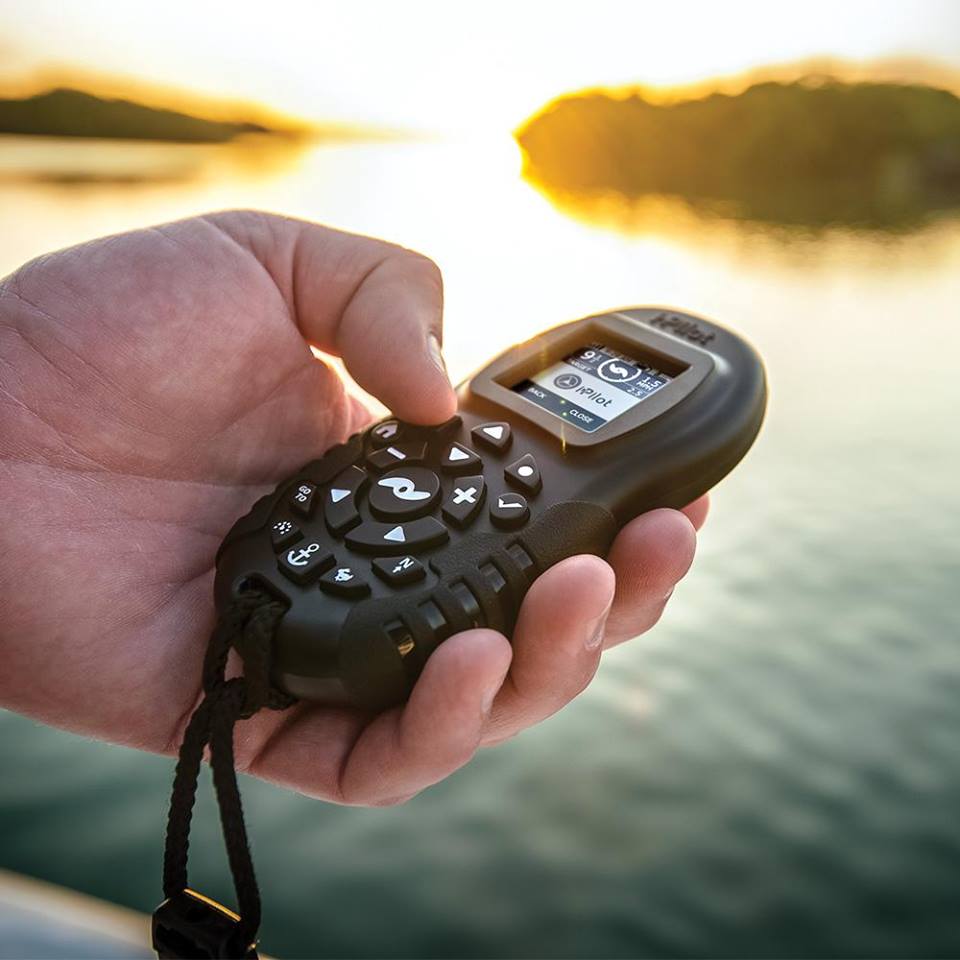
GPS controlled motors allow you to use a pre-programmed route that has been saved on the GPS function of your fish finder. This allows the motor to use its GPS to direct you straight to an anchor point saved on your GPS map on your fish finder or it allows you to follow a pre-saved GPS route automatically, allowing you to dictate the trolling speed of the motor. Due to the sophisticated technology, these tend to demand a higher price point.
Electric Outboard Prop Style
There is no doubt that propeller design can influence the performance and efficiency; however manufacturers tend to strike a balance between the two, and don’t offer many blade options. Motors either have a twin blade design or a tri-blade design. Some manufacturers also offer a weedless prop which is designed to push weeds away from the prop and conserve battery power. These replacement props are worth considering if you’re fishing a place with high weed concentration.
Speed
Fixed speed settings are most commonly seen on transom mounted motors. Usually coming with 5 forward settings and 2 or 3 reverse settings, these predefined settings alter the power outage in stages. Although these settings have proven reliable over many years, modern variable speed trolling motors offer better efficiency and offer more refinement and control and will inevitably maximise the use of battery life when one is out trolling on the water.

Saltwater or freshwater
The first thing to decide is whether you need a motor for saltwater or freshwater. Saltwater trolling motors are more expensive, as their components come with advanced corrosion protection and use premium grade alloys along with fully encapsulated electronics that are designed to specifically endure the harsh corrosive salt environment. Saltwater motors can be used in freshwater but we highly recommend not using freshwater motors in saltwater conditions. Remember to rinse down your saltwater motor with fresh water after use to stop salt build up.
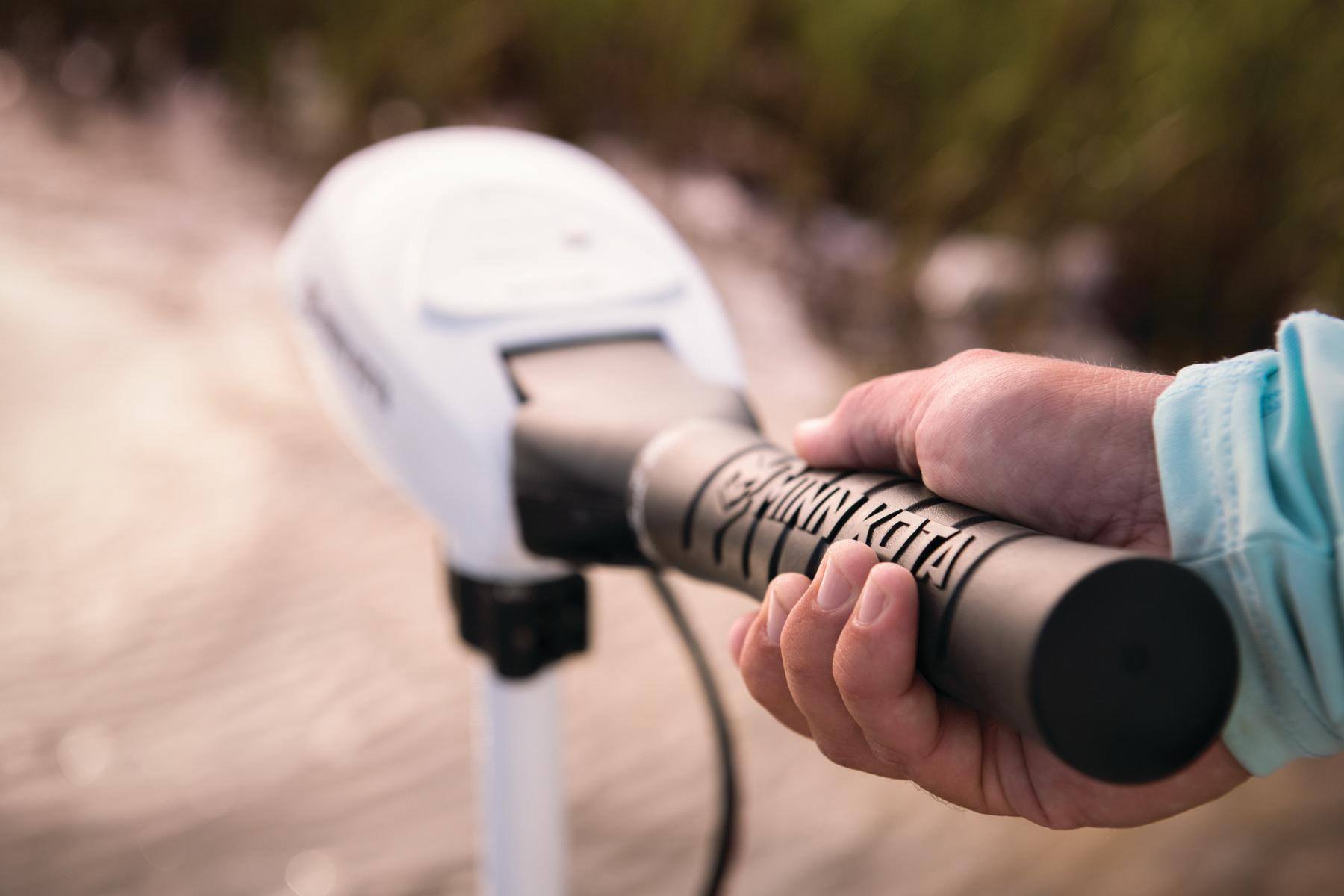
Saltwater motors are easily identifiable. The motor colour is usually different from the freshwater models.
Conclusion
Now we have a better understanding on the many variables to consider when purchasing an electric outboard motor. You should now be fully equipped to make a confident purchase. If however, you have any other questions in regards to trolling motors, please don’t hesitate to contact our team who are more than happy to assist.
Sigma Electric Outboard
from £179.99from £184.99Minn Kota Battery Power Centre
from £78.99Shakespeare Outboard Switch
from £37.99Minn Kota Endura Max Motor
from £329.00from £348.99Shakespeare 3 Blade Propeller
from £34.00Numax Connect + Forget Battery Charger
from £74.99

